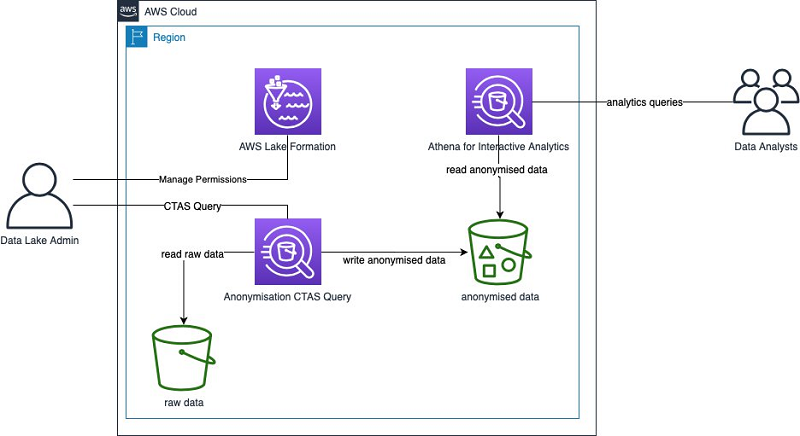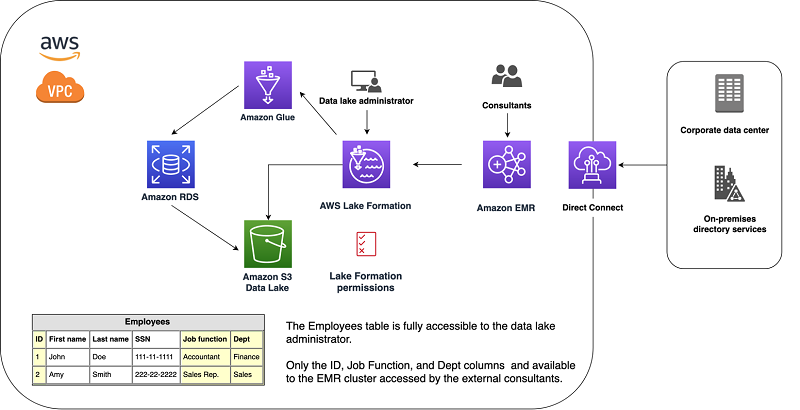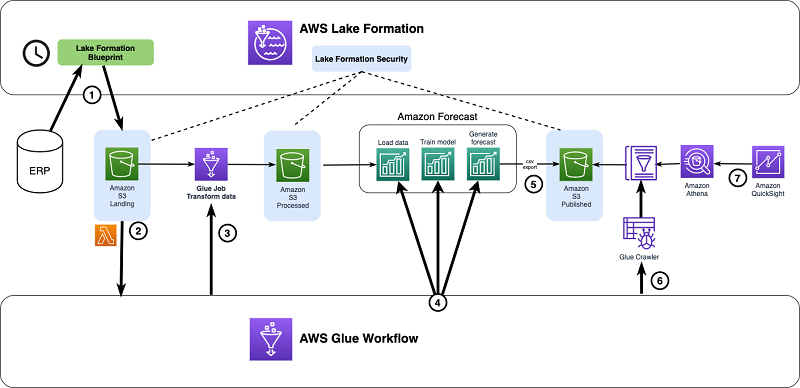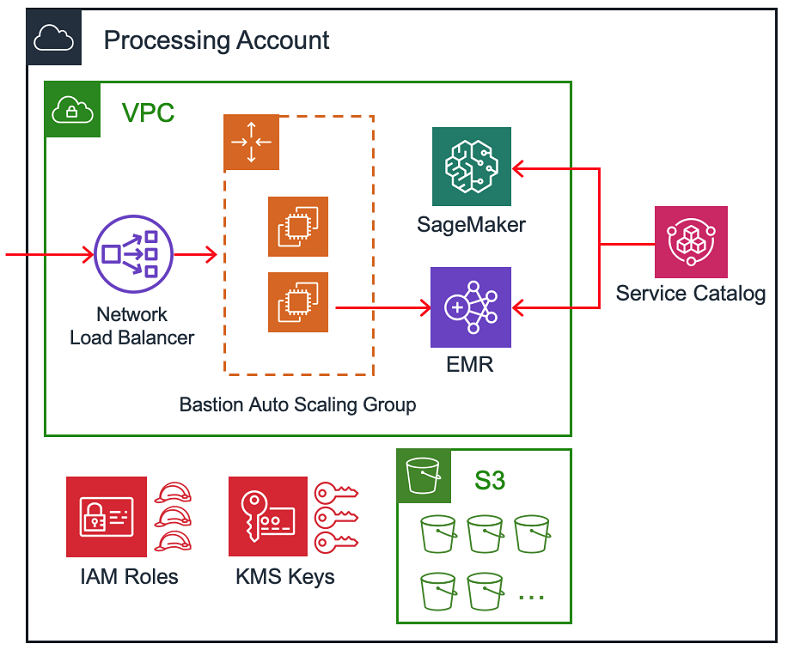AWS Big Data Blog
Tag: AWS Lake Formation
Anonymize and manage data in your data lake with Amazon Athena and AWS Lake Formation
Most organizations have to comply with regulations when dealing with their customer data. For that reason, datasets that contain personally identifiable information (PII) is often anonymized. A common example of PII can be tables and columns that contain personal information about an individual (such as first name and last name) or tables with columns that, if joined with another table, can trace back to an individual. You can use AWS Analytics services to anonymize your datasets. In this post, I describe how to use Amazon Athena to anonymize a dataset. You can then use AWS Lake Formation to provide the right access to the right personas.
Enable fine-grained data access in Zeppelin Notebook with AWS Lake Formation
This post explores how you can use AWS Lake Formation integration with Amazon EMR (still in beta) to implement fine-grained column-level access controls while using Spark in a Zeppelin Notebook. My previous post Extract Salesforce.com data using AWS Glue and analyzing with Amazon Athena showed you a simple use case for extracting any Salesforce object data using AWS Glue and Apache Spark, saving it to Amazon Simple Storage Service (Amazon S3), cataloging the data using the Data Catalog in Glue, and querying it using Amazon Athena.
Control data access and permissions with AWS Lake Formation and Amazon EMR
What if you could control the access to your data lake centrally? Would it be more convenient to share specific data securely with internal and external customers? With AWS Lake Formation and its integration with Amazon EMR, you can easily perform these administrative tasks. This post goes through a use case and reviews the steps to control the data access and permissions of your existing data lake.
Enable fine-grained permissions for Amazon QuickSight authors in AWS Lake Formation
This post demonstrates how to extend the Lake Formation security model to QuickSight users and groups, which allows data lake administrators to manage data catalog resource permissions centrally from one console. As organizations embark on the journey to secure their data lakes with Lake Formation, having the ability to centrally manage fine-grained permissions for QuickSight authors can extend the data governance and enforcement of security controls at the data consumption (business intelligence) layer. You can enable these fine-grained permissions for QuickSight users and groups at the database, table, or column level, and they’re reflected in the Athena dataset in QuickSight.
Enforce column-level authorization with Amazon QuickSight and AWS Lake Formation
Amazon QuickSight is a fast, cloud-powered, business intelligence service that makes it easy to deliver insights and integrates seamlessly with your data lake built on Amazon Simple Storage Service (Amazon S3). QuickSight users in your organization often need access to only a subset of columns for compliance and security reasons. Without having a proper solution […]
Build an end to end, automated inventory forecasting capability with AWS Lake Formation and Amazon Forecast
This post demonstrates how you can automate the data extraction, transformation, and use of Forecast for the use case of a retailer that requires recurring replenishment of inventory. You achieve this by using AWS Lake Formation to build a secure data lake and ingest data into it, orchestrate the data transformation using an AWS Glue workflow, and visualize the forecast results in Amazon QuickSight.
Build an AWS Well-Architected environment with the Analytics Lens
Building a modern data platform on AWS enables you to collect data of all types, store it in a central, secure repository, and analyze it with purpose-built tools. Yet you may be unsure of how to get started and the impact of certain design decisions. To address the need to provide advice tailored to specific technology and application domains, AWS added the concept of well-architected lenses 2017. AWS now is happy to announce the Analytics Lens for the AWS Well-Architected Framework. This post provides an introduction of its purpose, topics covered, common scenarios, and services included.
A public data lake for analysis of COVID-19 data
April 2024: This post was reviewed for accuracy. As the COVID-19 pandemic continues to threaten and take lives around the world, we must work together across organizations and scientific disciplines to fight this disease. Innumerable healthcare workers, medical researchers, scientists, and public health officials are already on the front lines caring for patients, searching for […]
Matching patient records with the AWS Lake Formation FindMatches transform
Patient matching is a major obstacle in achieving healthcare interoperability. Mismatched patient records and inability to retrieve patient history can cause significant barriers to informed clinical decision-making and result in missed diagnoses or delayed treatments. Additionally, healthcare providers often invest in patient data deduplication, especially when the number of patient records is growing rapidly in […]
Provisioning the Intuit Data Lake with Amazon EMR, Amazon SageMaker, and AWS Service Catalog
This post outlines the approach taken by Intuit, though it is important to remember that there are many ways to build a data lake (for example, AWS Lake Formation). We’ll cover the technologies and processes involved in creating the Intuit Data Lake at a high level, including the overall structure and the automation used in provisioning accounts and resources. Watch this space in the future for more detailed blog posts on specific aspects of the system, from the other teams and engineers who worked together to build the Intuit Data Lake.









